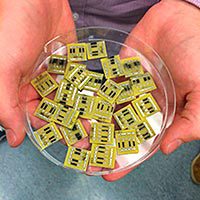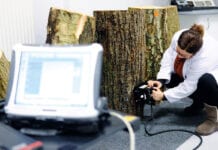
US startup ChemiSense is developing a wearable air quality monitor that it says will be able to inform the wearer about pollutants in their immediate vicinity. The technology could help people with respiratory conditions and those who live in highly polluted areas to keep tabs on exposure.
Based in Berkeley, California, Chemisense is employing a sensing technology that is said to be inexpensive and capable of detecting pollutant levels in real-time, data that would be reported to the user via an app on their smartphone.
The company also plans to crowdsource data from users to show places around town where certain pollutants are identified.
Initially, the company plans to sell a $150 wristband geared toward young children with asthma. This would help them identify places and pollutants that tend to provoke attacks, and to track their exposure to air pollution over time. The company hopes people with other respiratory conditions, and those who are just concerned about air pollution, will be interested too.
In the UK, air quality monitors are widely deployed by local councils and others with responsibility for maintaining air quality. But these only provide accurate data about these specific locations.
Chemisense has not yet made its initial product, but it expects it will be a wristband using polymers treated with charged nanoparticles of carbon such that the polymers swell in the presence of certain chemical vapors, changing the resistance of a circuit.
The company hopes to produce prototypes in early 2015. The company’s technology can already detect about a dozen chemicals and compounds, including benzene, hexene, nitrogen dioxide, and carbon monoxide. It is working toward detecting about 19 others.
The technology is currently not nearly as sensitive as Chemisense would like it to be—the company is currently detecting tens of parts per million for a number of compounds, though it’s working towards detecting hundreds of parts per billion. “I think that’s going to be our commercial limit for the time being,” cofounder and CEO Brian Kim said, in comments made to MIT Technology Review in August. A municipal air-quality monitoring station, by comparison, would be able to detect between ten and one parts per billion.







